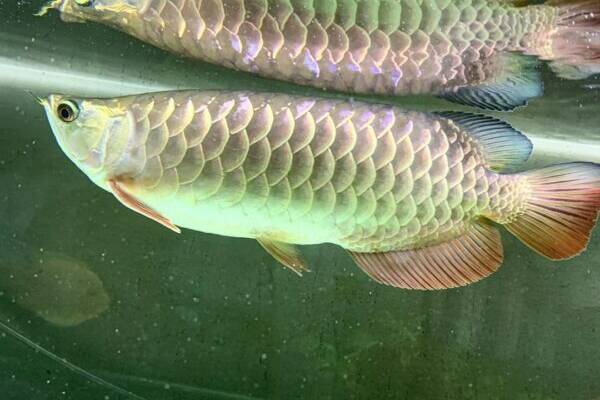Description
Malaysian Golden Blue Base Arowana for Sale
Are you looking to add a touch of elegance and rarity to your aquarium? Look no further than the Malaysian Golden Blue Base Arowana, now available at Ranch of Exotic Breeds. Known for its striking appearance and majestic presence, this exotic fish is a prized possession for aquarists and collectors alike. In this article, we’ll dive into everything you need to know about the Malaysian Golden Blue Base Arowana, including its unique features, care requirements, and why it’s a must-have for your collection.
The Malaysian Golden Blue Base Arowana is a rare and highly sought-after freshwater fish known for its shimmering golden scales and blue-tinted base. Originating from Malaysia, this Arowana is a symbol of prosperity and good fortune in many cultures. Its sleek body, vibrant colors, and graceful movements make it a centerpiece in any aquarium. At Ranch of Exotic Breeds, we offer healthy, high-quality Malaysian Golden Blue Base Arowanas for sale, ensuring you receive a premium specimen for your collection.
Why Choose the Malaysian Golden Blue Base Arowana?
Exquisite Beauty: The fish boasts a unique combination of golden and blue hues, creating a mesmerizing visual effect.
Symbol of Prosperity: In Asian cultures, the Arowana is believed to bring good luck, wealth, and positive energy.
Rarity: The Malaysian Golden Blue Base Arowana is a rare variant, making it a valuable addition to any collection.
Long Lifespan: With proper care, these Arowanas can live up to 20 years, offering long-term companionship.
Care Tips for Malaysian Golden Blue Base Arowana
To ensure your Arowana thrives, follow these care guidelines:
Tank Size: Arowanas are large fish and require a spacious tank. A minimum of 250 gallons is recommended for adult Arowanas.
Water Conditions: Maintain a water temperature of 75-86°F (24-30°C) and a pH level of 6.0-7.5. Regular water changes are essential to keep the environment clean.
Diet: Feed your Arowana a balanced diet of live or frozen foods such as shrimp, crickets, and small fish. High-quality pellets can also be included.
Tank Mates: Choose tank mates carefully, as Arowanas can be territorial. Avoid small fish that may be seen as prey.
Lighting: Use subdued lighting to mimic their natural habitat and enhance their colors.
FAQs About Malaysian Golden Blue Base Arowana
1. What is the price of a Malaysian Golden Blue Base Arowana?
The price varies depending on size, age, and quality. At Ranch of Exotic Breeds, we offer competitive pricing for our premium specimens. Contact us for a detailed quote.
2. How big do Malaysian Golden Blue Base Arowanas grow?
These Arowanas can grow up to 24-36 inches in length, depending on their environment and care.
3. Are Malaysian Golden Blue Base Arowanas difficult to care for?
While they require specific care conditions, they are manageable for experienced aquarists. Beginners should research thoroughly or consult with experts before purchasing.
4. Can I keep multiple Arowanas in the same tank?
It’s possible but challenging due to their territorial nature. A large tank with ample hiding spots is essential if housing multiple Arowanas.
5. Do Malaysian Malaysia golden Crossback arowana mgbbmggb require special permits?
In some countries, Arowanas are protected species, and owning them may require permits. Check your local regulations before purchasing.
6. How can I enhance the colors of my golden blue base Crossback arowana?
A balanced diet, clean water, and proper lighting can help enhance the natural colors of your Arowana.
7. What is the lifespan of a golden crossback arowana mgbbmggb malaysia?
With proper care, these Arowanas can live up to 20 years or more.
Why Buy from Ranch of Exotic Breeds?
At Ranch of Exotic Breeds, we pride ourselves on offering only the highest quality exotic fish. Our Malaysian golden blue base Crossback are carefully selected, healthy, and acclimated to ensure they thrive in their new homes. Here’s why you should choose us:
Expert Guidance: Our team is always available to provide care tips and answer your questions.
Health Guarantee: We ensure all our fish are healthy and disease-free before sale.
Secure Shipping: We offer safe and reliable shipping options to deliver your Arowana to your doorstep.
Customer Satisfaction: Your satisfaction is our priority. We’re committed to helping you create a stunning aquarium.
Conclusion
The Malaysian Golden Blue Base Arowana is more than just a fish; it’s a statement piece that adds elegance and prestige to any aquarium. Its rarity, beauty, and cultural significance make it a prized possession for collectors and enthusiasts. At Ranch of Exotic Breeds, we’re excited to offer this exquisite species to our customers.
Ready to elevate your aquarium with an Asian arowana for sale? Contact us today to learn more about our Malaysian Golden Blue Base Arowanas for sale and bring home a piece of aquatic luxury!
Call to Action:
Visit Ranch of Exotic Breeds today to explore our collection of Malaysian Golden Blue Base Arowanas and other Baby arowana for sale. Let us help you create the aquarium of your dreams!

Malaysian Golden Blue Base Arowana for Sale | Ranch of Exotic Breeds





Reviews
There are no reviews yet.